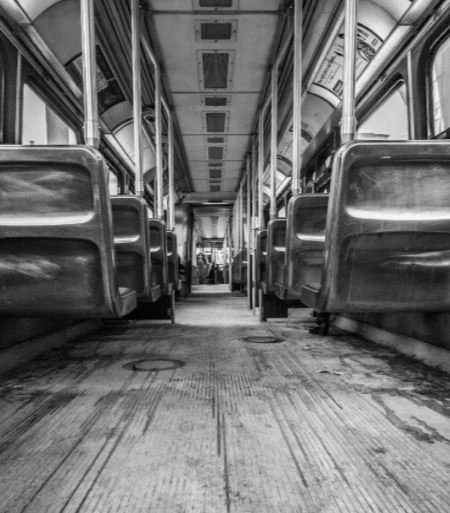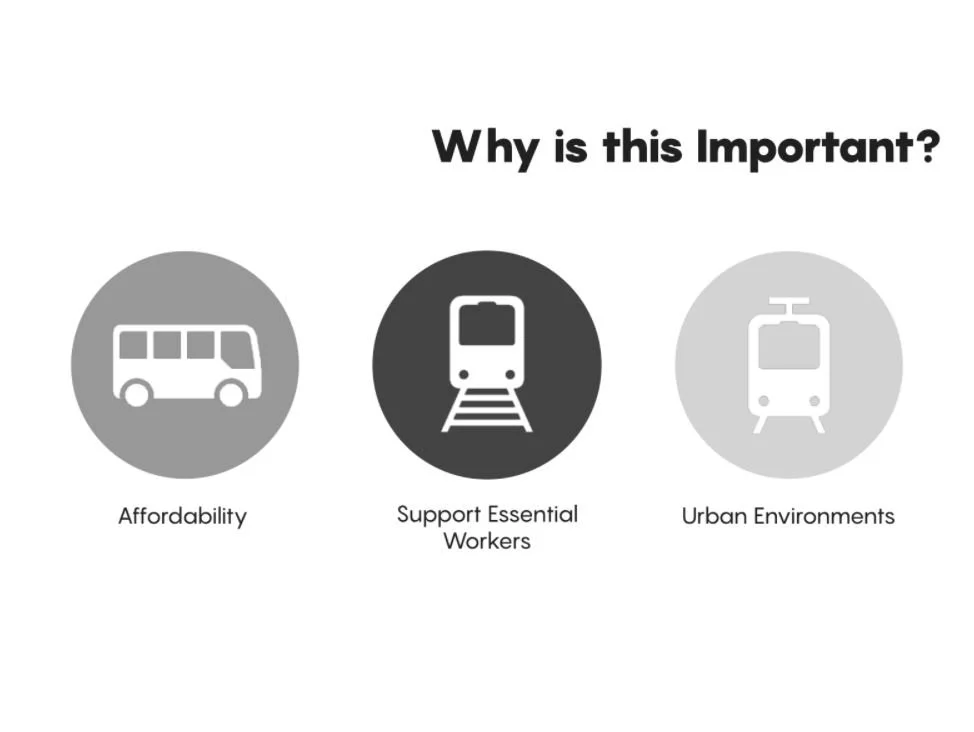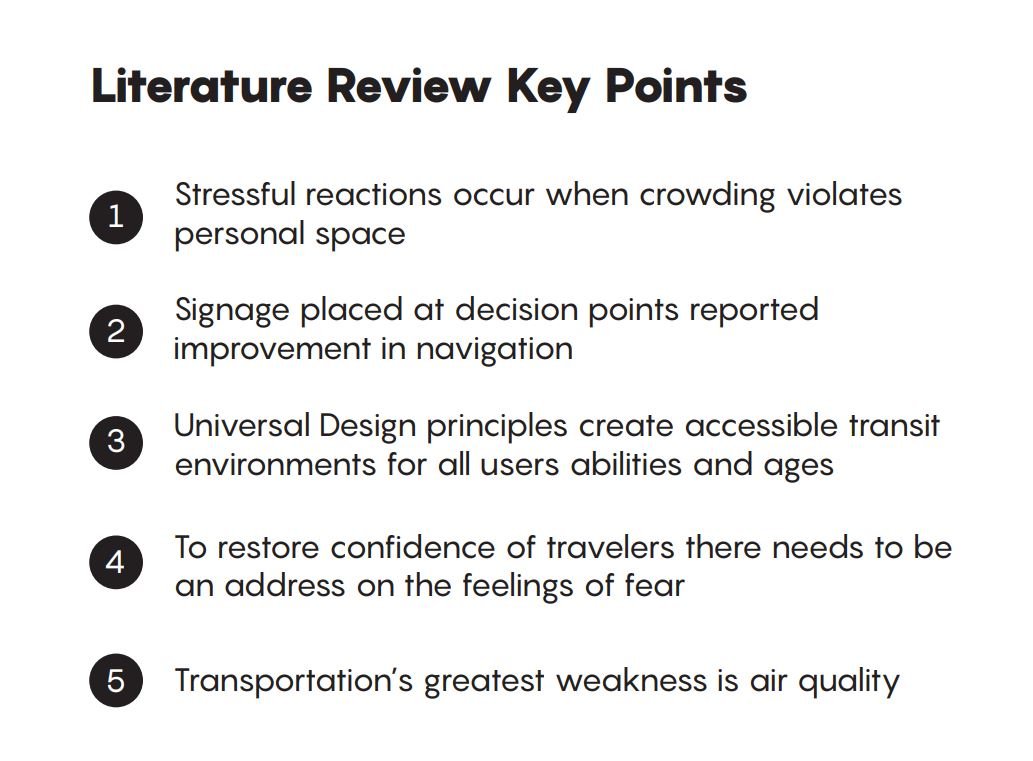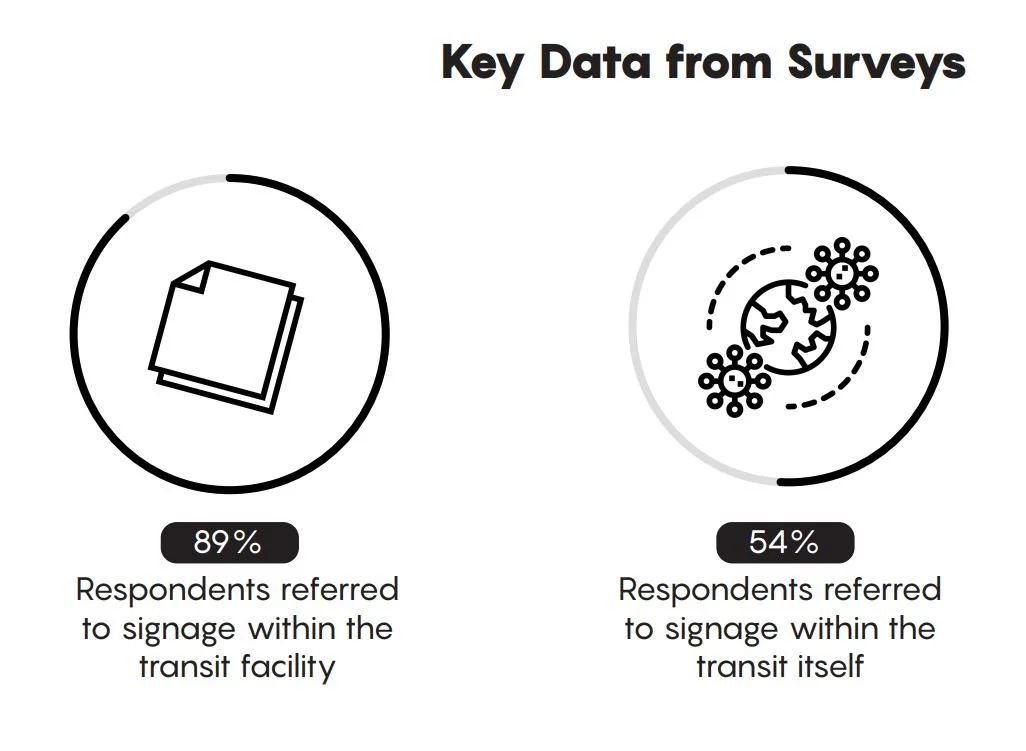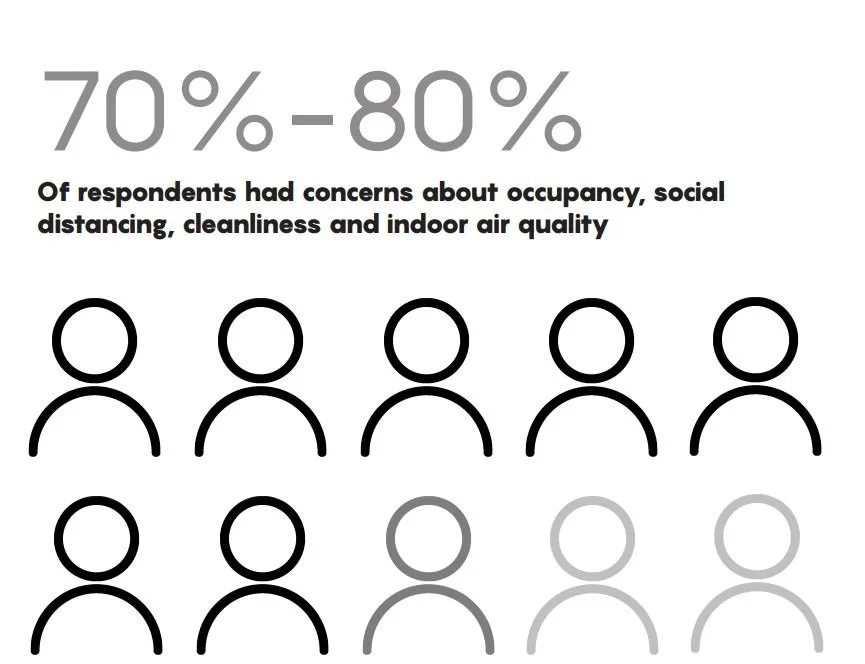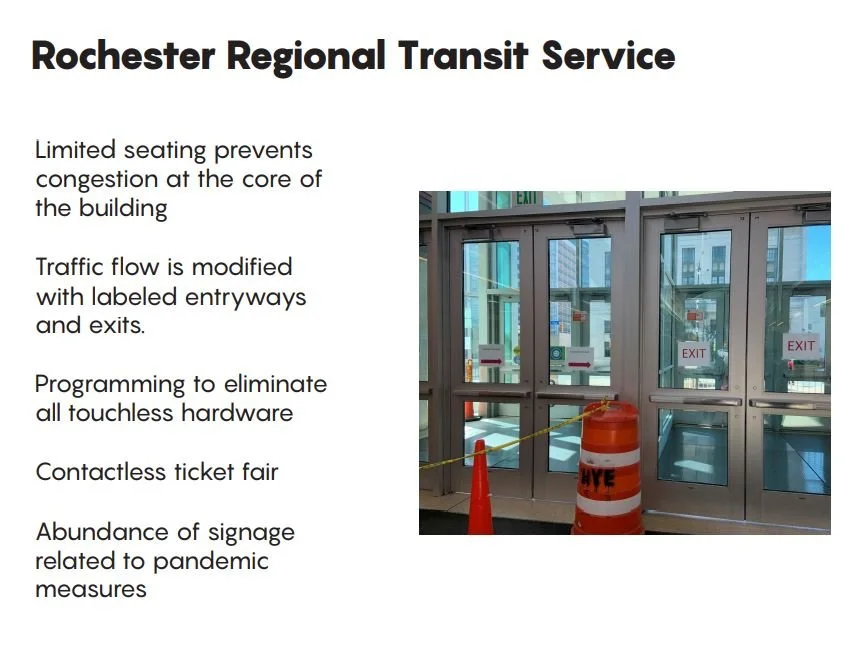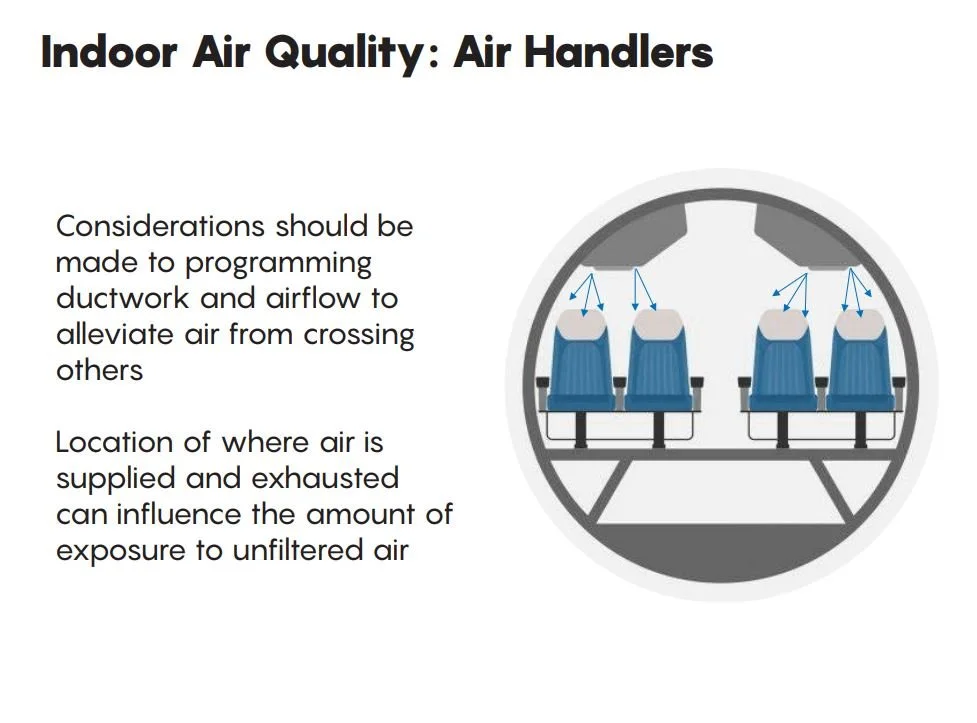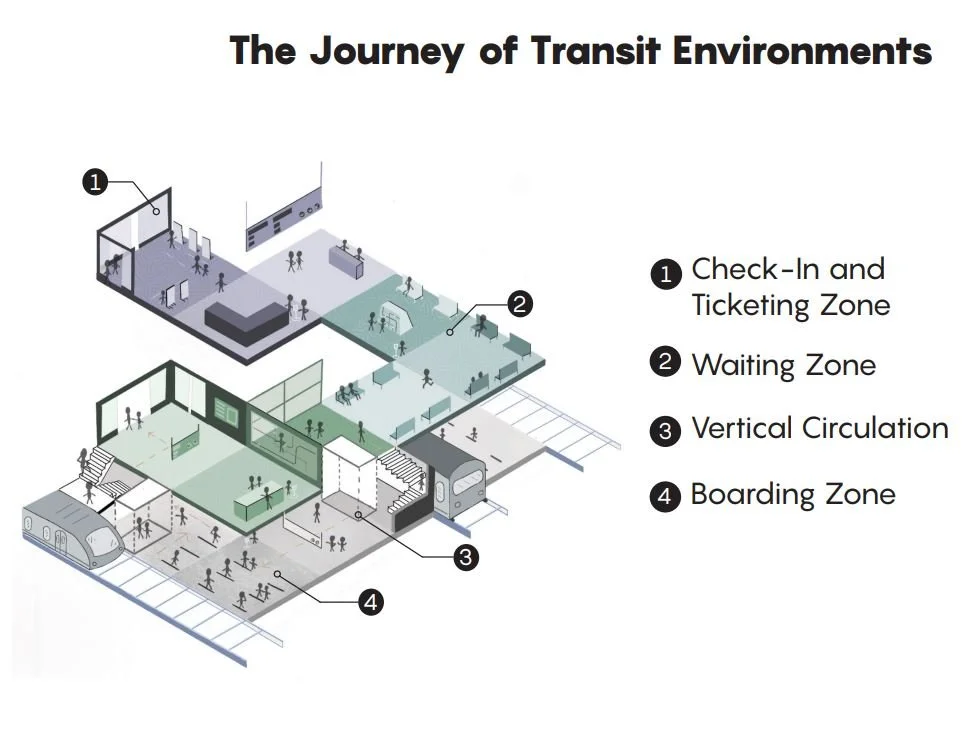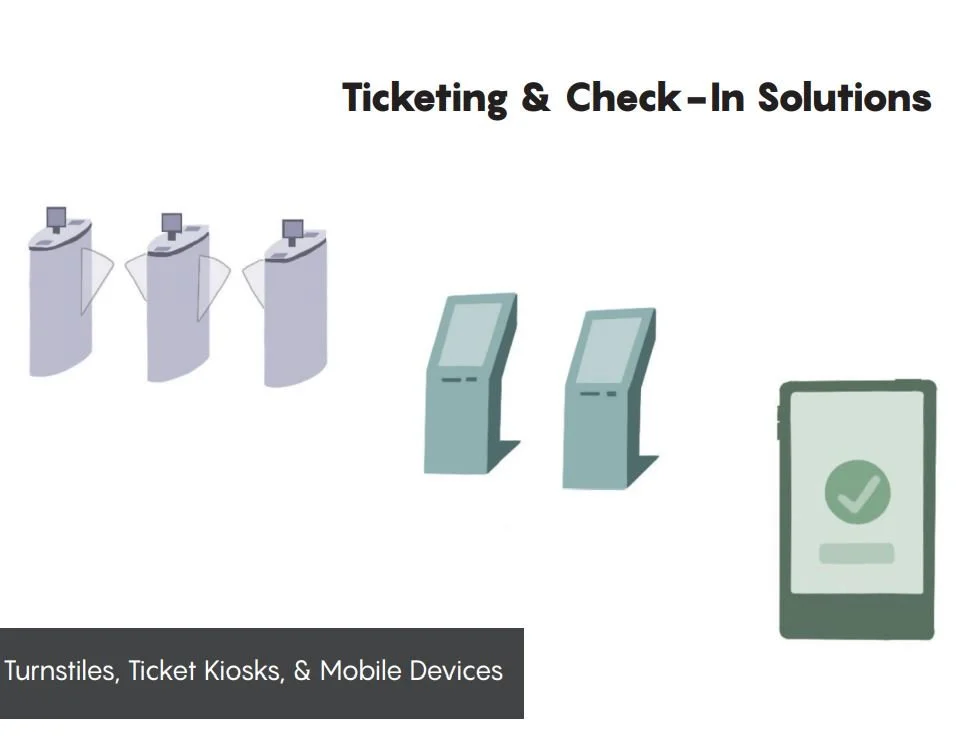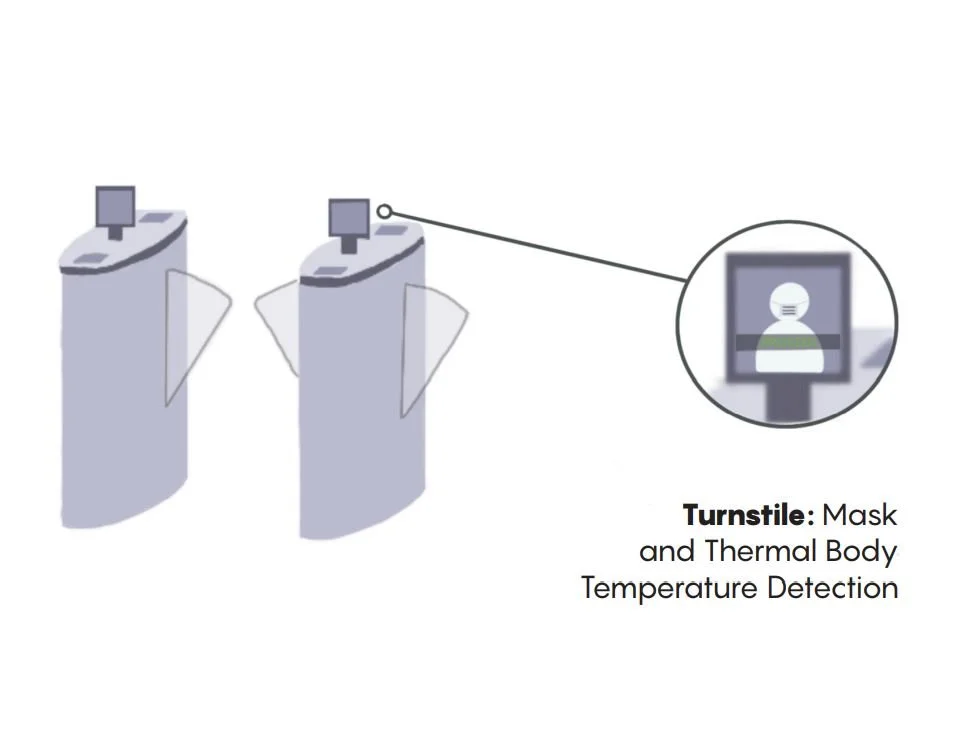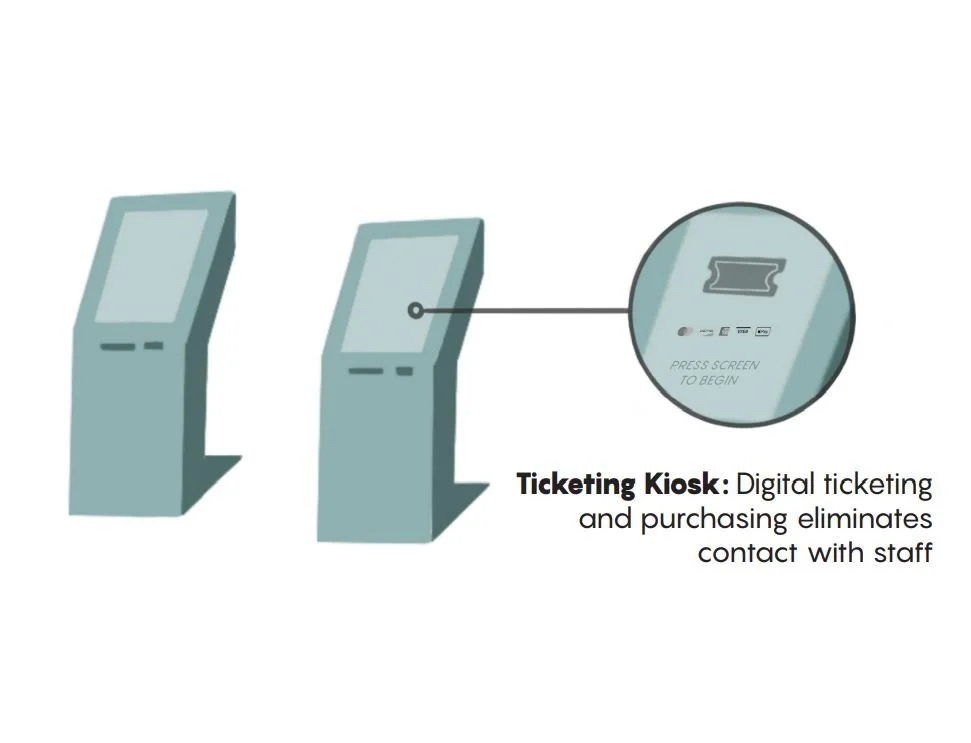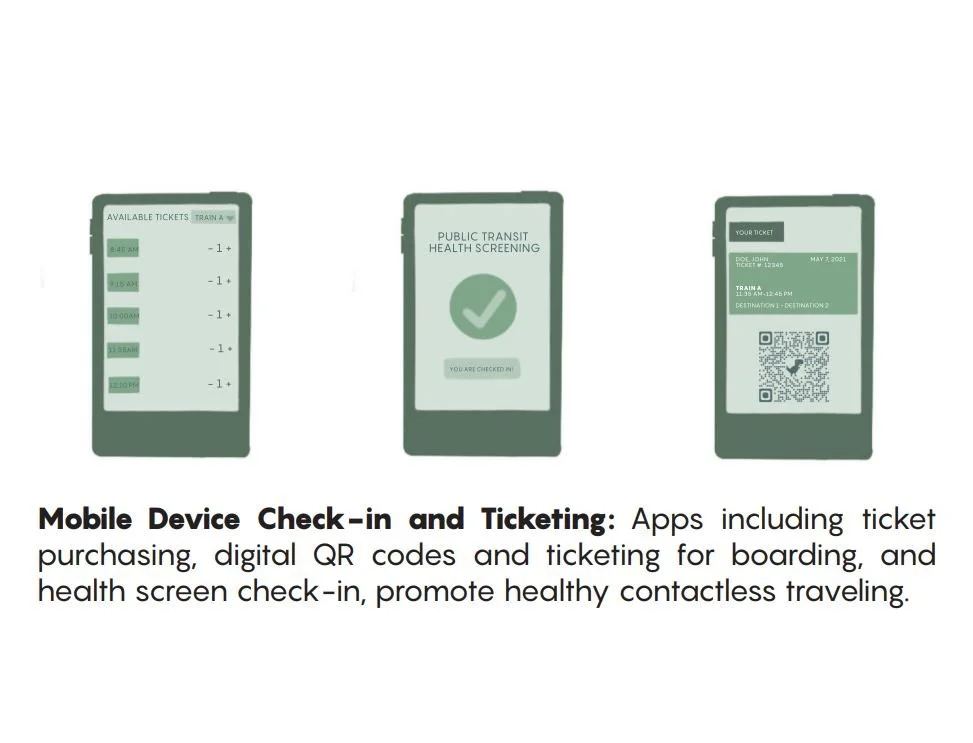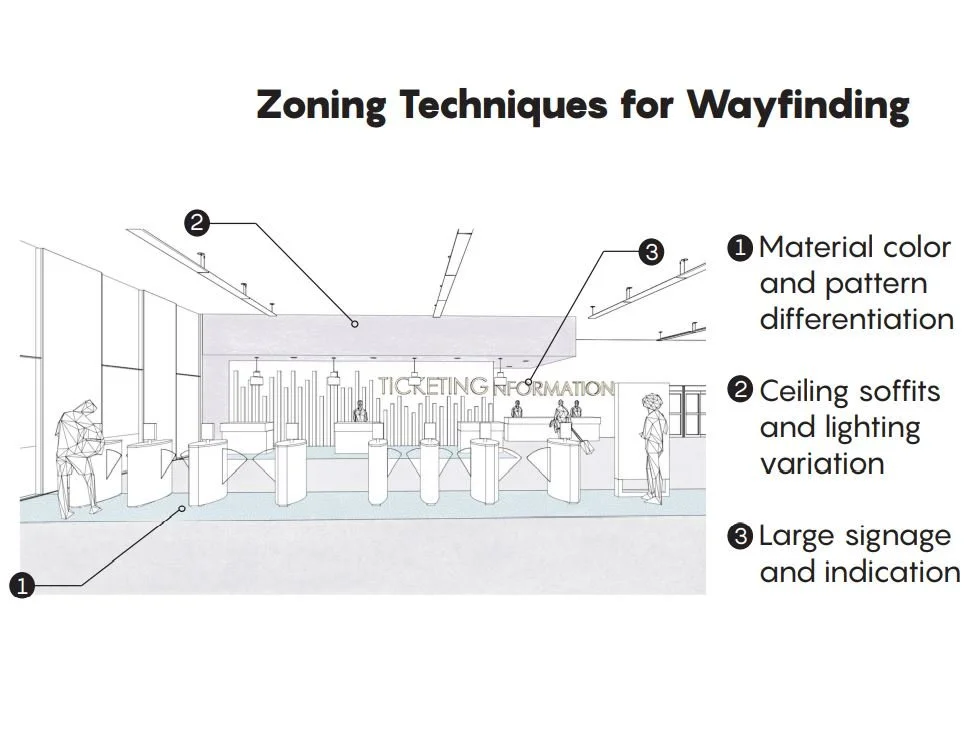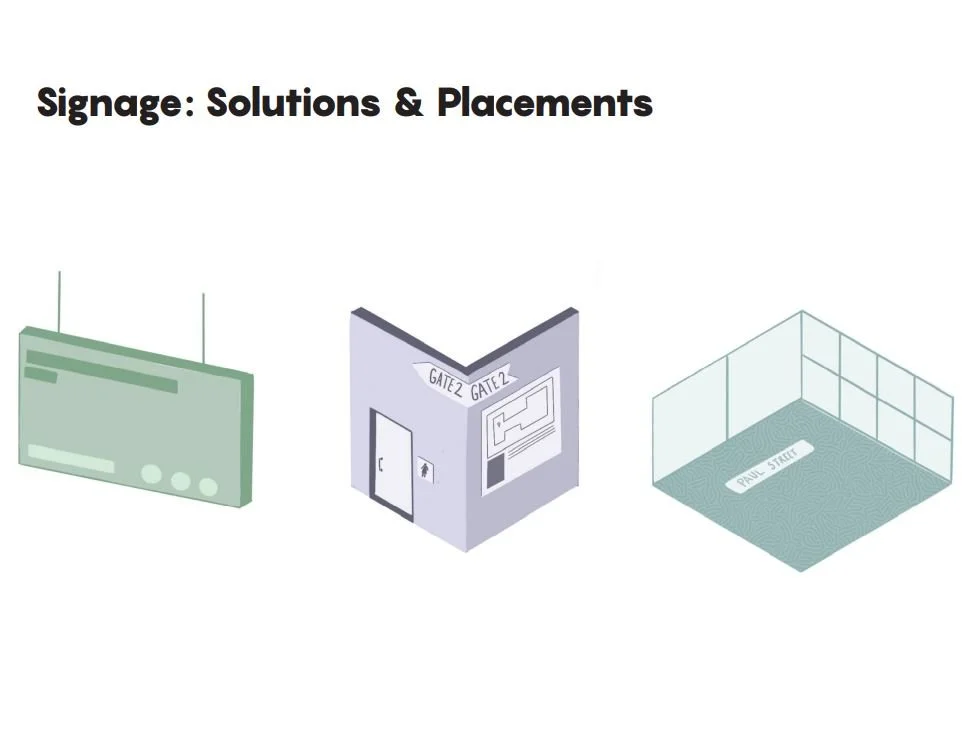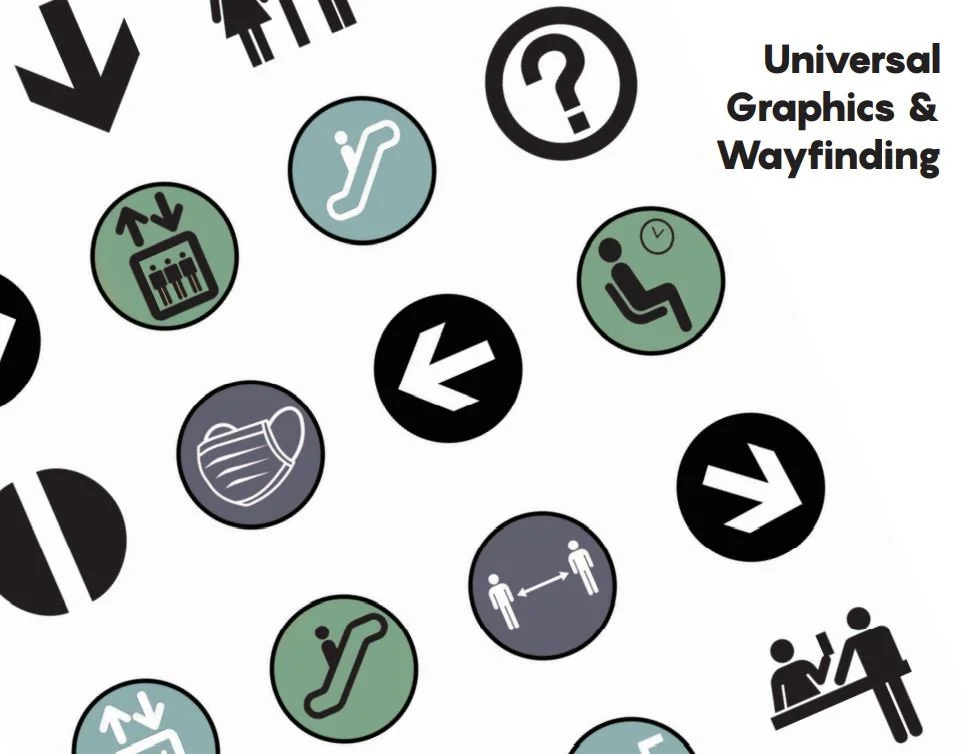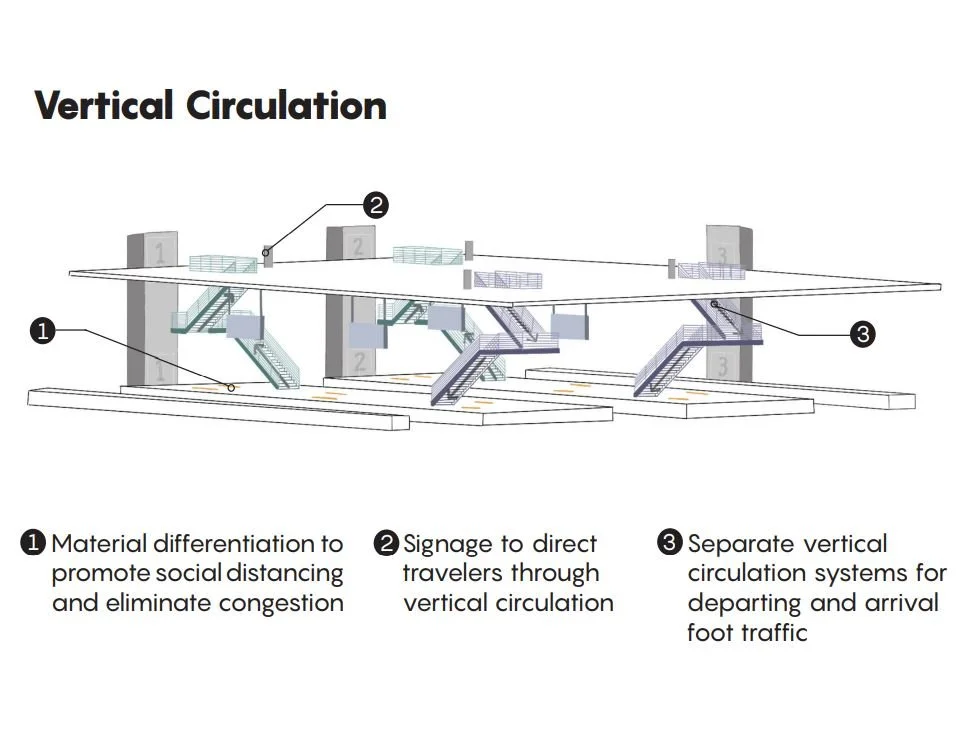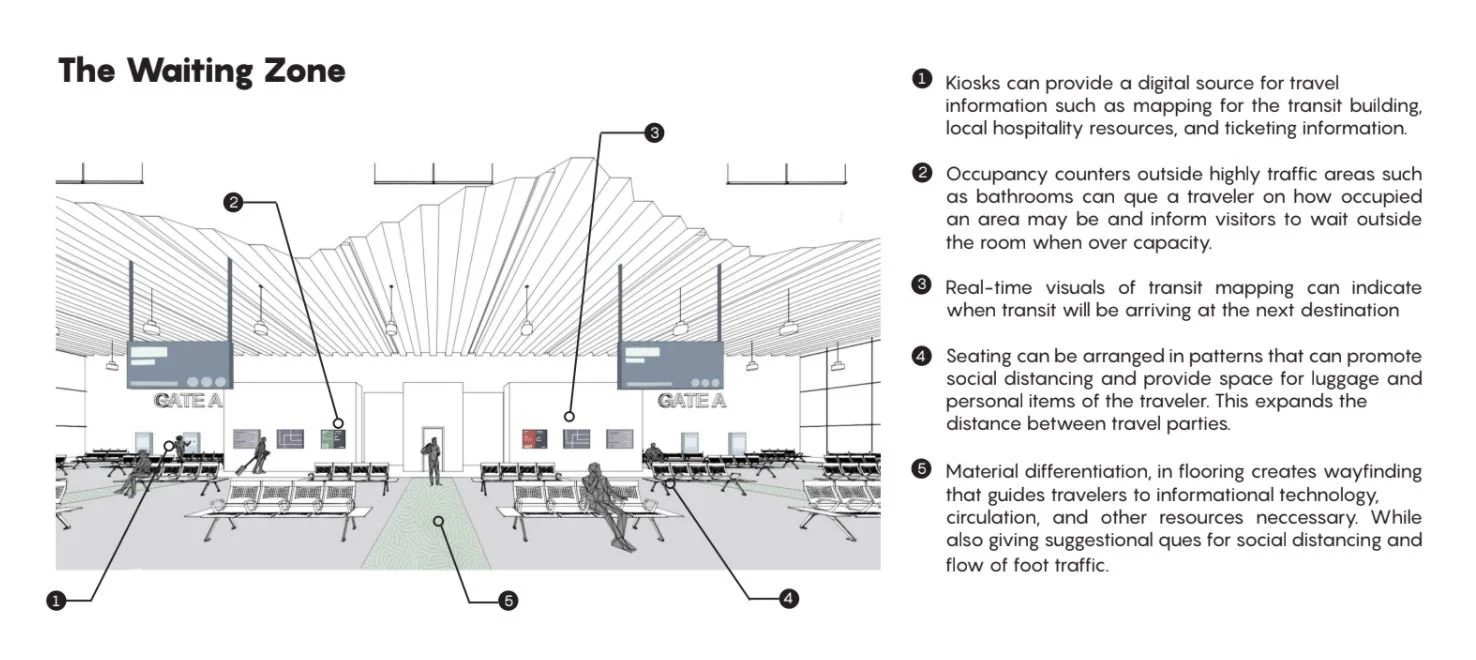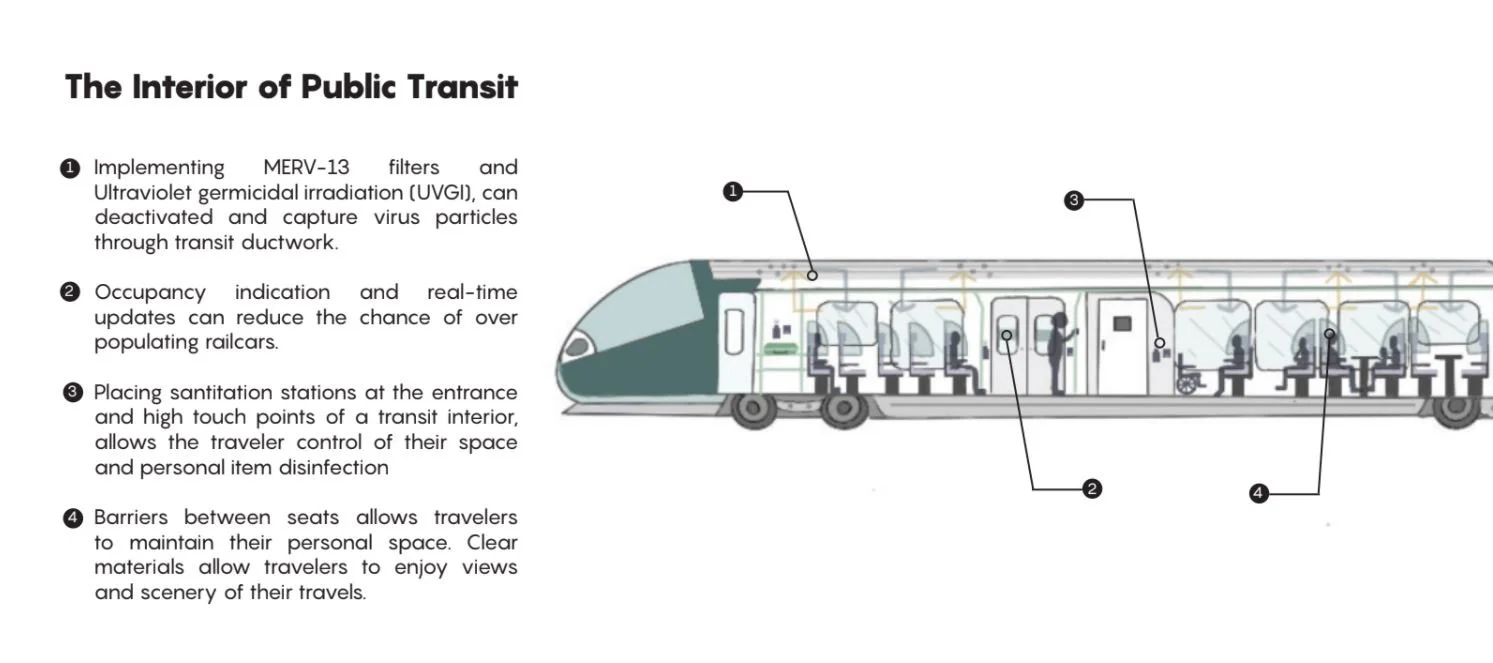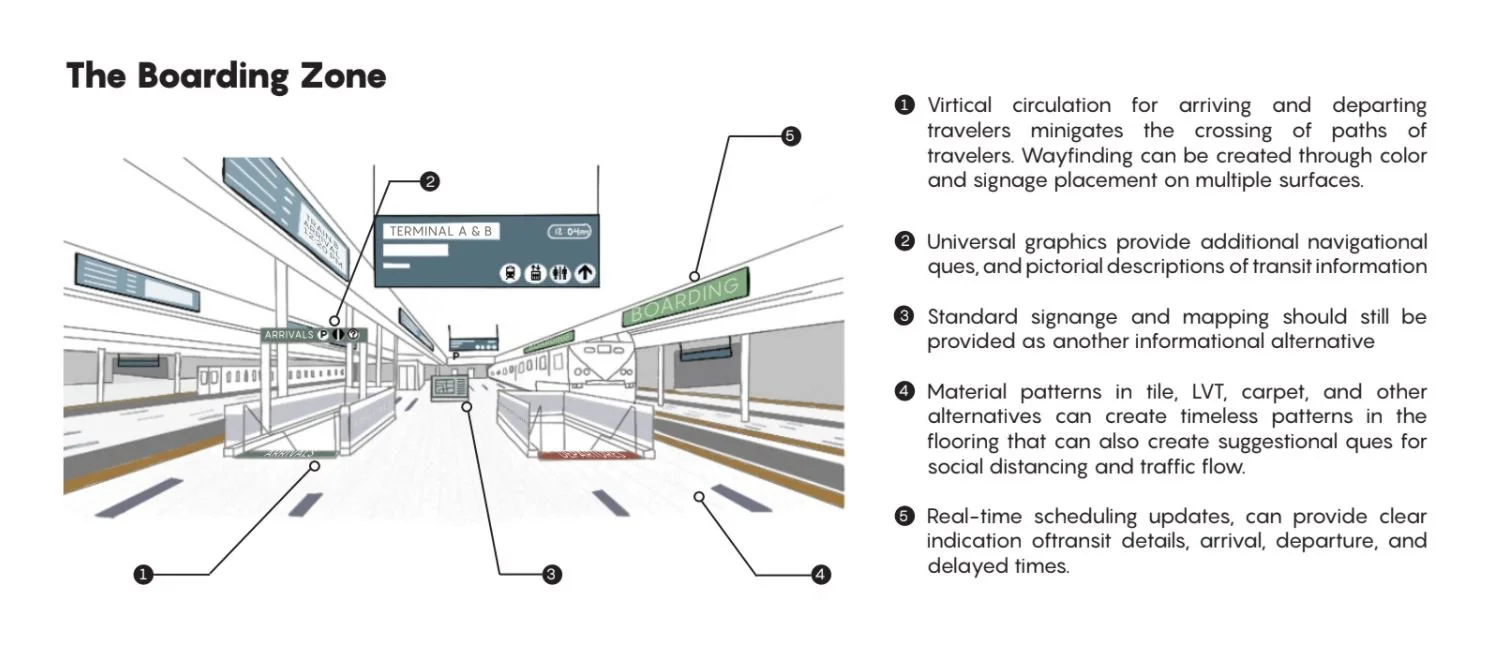Mass Transit in the Midst of the Pandemic: The Ticket to Healthy Transportation
How can mass transit environments protect the health and safety of passengers, while also benefiting behavioral health?
To investigate and inform a research agenda, qualitative and quantitative data was collected to defend the design thinking and creative agenda of this thesis proposal. This is a multi-prompt approach that focuses on several aspects of the mass transit experience. Prompts include, selection of materials and surfaces, wayfinding and signage, air transmission in transit, and the behavioral health of humans from the impact of the pandemic while reentering the new norm.
A prototypical transit terminal and railcar is reimagined to provide insight into designing future transit environments. Elements of the traveler’s footpath and journey of travel are the points of focus for the proposed design. The capstone creative agenda aims to answer the following: 1) Fair and ticketing : is there a way to make this a touchless, mainly contactless process that is, easy for all users? 2) The waiting area : how can design regulate social distancing, eliminate high touch zones, and identify where to safely place your baggage? 3) The transportation: how can we give people private seating spaces that, visually identify that high touch zones are clean, and the air quality is improved? These three points of focus inform a design guide for protecting and improving behavioral health of travelers while adapting to environmental changes due to the current global pandemic of 2020.
This undergraduate interior design capstone investigated aspects of the transit experience through literature reviews and original research to, validate the concerns the public has regarding mass transit. Issues of congestion, navigation, noticing COVID-19 regulations from the 2020 global pandemic, and feeling comfortable despite impairments are the main concerns travelers have in the high traffic setting of public transit. These fears are variables in the scholarly investigation and the creative agenda sought to answer how the transit experience can be reimagined through design techniques. Extracting evidence from research, the creative agenda investigated a prototypical railcar scenario, and resulted in the development of a guidebook that can be applied to various transit environments to reimagine the design and experience of public transit for the health and safety of travelers.
